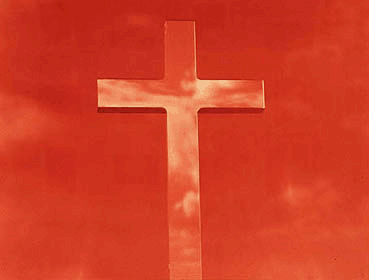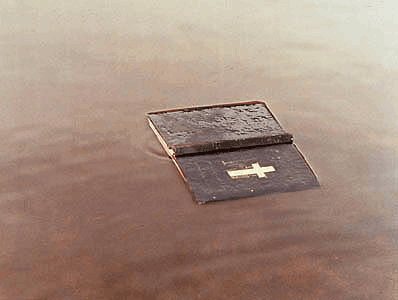by Hannah Fink
© all rights reserved
“We have a sense that there is nothing much left to burn, except ourselves.”1
The category ‘urban Aboriginal art’ was announced in the latter 1980s to counter the perception that the only authentic Aboriginal art was ‘tribal’ art from the desert and the top end. This categorisation made a necessary statement at a particular point in time, but the endurance of the term has since become problematic. Books and encyclopedias on Aboriginal art are organised ‘geographically’ under the chapter headings Kimberley, Central Desert, Top End, Tasmania — and Urban. As the curator Djon Mundine has wondered, ‘Where is urbania?’. One might as well ask where is suburbania, as the indigenous experience is as likely to be exurban or rural as metropolitan or outback.
Urban Aboriginal art, one could claim, is as fictive a category as the many figments of imagination that comprise what is understood by most non-indigenous Australians as being Aboriginal. Representations of indigenous people are not only part of Australia’s imaginary but most often are literally imaginary, part of the nation’s mythic unseen. Destiny Deacon, Brenda L Croft, Michael Riley, Leah King-Smith and Brook Andrew each deal with the received imagery of the Aboriginal phantasm, whether a nineteenth-century photograph taken for ‘anthropological’ purposes, a garden gnome of the ‘noble savage’, or ‘native’ designs used to decorate an ashtray, in ‘a theatre of politics in which self-representation has become a sophisticated device’.2
A requisite of self-definition must be liberation not only from the incarcerations of stereotype and the burden of having to perform or translate a self for a nominal white audience, but freedom from the onus of having to define oneself at all. This very ordinary liberty can only be of critical importance to a people who historically have been categorised and pathologised: as ‘full blood’ or ‘half-caste’, as ‘primitive’ or ‘extinct’, or, in the parlance of contemporary statistics, as uneducated and unemployed. While participating in a dialogue within the arena of contemporary art, each of the artists in this exhibition uses strategies of indirection to fox appropriation and to stake out areas of difference that cannot be mediated or redrawn.
By photographing friends and admired acquaintances, Destiny Deacon experiments with finding ways around or through the camera’s innate voyeurism. Deacon’s photographs and videos are literally homemade, shot either in her living room or in her subject’s houses. Getting the right shot, she says, is ‘like playing pokies’, and her images are apparentlyincidental, uncaught or unaccounted for like the sidelong glance or the child’s snapshot. Yet the video that shows the artist’s process, Taking Pictures,reveals a perfectionist at work, and the results are far from casually acquired. In seeming accidental or even amateurish, Deacon stakes a claim for being able to be unpredictable, unaccountable, or even inexplicable: of possessing one’s mystery, rather than being attributed with it.
Stereotype of course relies upon generalisation, and there is perhaps no better way of insisting on cultural specificity than telling jokes. Deacon’s is an all-female world, and Taking Picturesshows the artist and her girlfriends giggling, gossiping, bitching and laughing — the kind of intimate banter that happens when you’re with your own kind. As Marcia Langton suggests, perhaps the works speak differently to different people — black and white, male and female:
Destiny loves to resurrect the imagery of our oppression, position her favourite dolls or people in her stage sets, and eke out the discomfort. I have often wondered if her work irritates whites in the same way as it irritates me. Or is the message different for them?3
Deacon parodies the titillations of the ‘exotic other’, as in her tuneless rendition of ‘Hey Big Spender’ sung to her photographic subject Dale Spender. But outside these few hilarious moments and between the muffled and mostly inaudible dialogue of the tape, Deacon not only signally fails to entertain but actually presumes to bore the viewer.
One of the most effective political weapons is that of not listening— of forcing people to repeat themselves over and over and to simplify their meaning until it takes on the hollow ring of propaganda and dissolves into inanity. Brook Andrew tackles the mechanics of propaganda in images that play with the tools of marketing and advertising. But unlike the fixed messages of the marketeer, Andrew sends crossed signals. Gay rights and land rights are conflated as an image of ‘the primitive’ is overlaid with homoerotic overtones, or a show of fists united by the one-word slogan ‘Demand’. Andrew is not equating gay and indigenous liberation, but rather complicating one with the other. Yet there is something ‘off’ about the images; the message they send is confusing, unreadable. The image of the car in bungal gara gara is a web grab of the car in which Princess Diana was killed; the text means, in Wiradjuri, ‘all over the place’. In this scheme appropriation is a random, amoral force, prising image and text from value or meaning. Andrew’s version of the hybrid is disturbing, and particularly so as it is presented from an indigenous perspective. One cannot be quite sure what he is selling or saying.
The photographs used in Sexy and Dangerous and I Split Your Gazeare taken from nineteenth-century ‘anthropological’ studies of Aboriginal men. In her series Patterns of Connection Leah King-Smith also uses archival photographs which she superimposes over colour images of the Australian bush. Contra to the reductions of anthropological classification, the artist remystifies the land by literally haunting it. However while the images seek to animate the equation of land and self that is so central to Aboriginal culture, they do not so much present patterns of connection as of alienation. The figures that ghost the landscape — Aboriginal people dressed in Mission whites – fade at the edges, are just out of reach. The claustral space between the figures and the landscape, between the received image and its resuscitation, contains a past that is ungraspable, an abruption of memory. The unpeopled landscape may host a natural religion, but in King-Smith’s scheme it is one without practitioners: the darkness from which the images emerge is the darkness carried by one born without a mother tongue.
The central image in Brenda L Croft’s series In My Father’s House depicts the eighteen-month-old artist squinting into the sun as she stands between her parents — European mother, Aboriginal father — on the lawn outside the family home in suburban Perth. Croft directly addresses her family history using found photographs and faded colour slides taken by her parents overlaid with text. Joseph Croft, Brenda’s father, was a ‘stolen child’, taken from his mother when he was eighteen months old as part of the Australian Government’s policy of forcibly removing Aboriginal children of mixed parentage from their families. It was not until a few months before his mother died that they were reunited (She Called Him Son).This heartbreaking photograph, taken by Croft’s mother, is interrupted by an image of a group of Aboriginal women and a single white woman ‘arranged in a line like some colour chart’, a children’s-book illustration of the government’s eugenicist vision.4 Such tremendous loss defies analogy or fictionalisation, and the pain implicit in Croft’s images cuts through the sophistry that might attempt to present the theft of children as a benevolent exercise. Croft’s personal archive describes the grief that lies at the heart of Australia today.
Michael Riley’s film Empire depicts a seemingly post-apocalyptic Australia, ravaged by clearing and cultivation. Through images of poetic realism — a tree clawing at cracked soil, a dead galah by a roadside, enormous skies with blood-red sunsets — Riley repatriates the land and tells a story of loss and survival. For Aboriginal people the desecration of land is also a desacralisaton, yet for the artist a beauty remains in a landscape that suggests ways of measuring time closer to the ancient inhabitation of the indigenous people than the 211 years of European settlement. Riley’s family, like almost all Aboriginal people on missions, was forbidden to speak their language, and the only words spoken in Empireare those of a missionary. For Riley, who grew up on Talbragar Mission in Dubbo, the crucifix represents an ideology of oppression, a weapon of colonisation. The burning cross invokes the Ku Klux Klan, referring to the often virulent racism of ‘rednecks’ in Australian country towns, and its sudden appearance in the film — along with the image of a burning flag and the stigmata — disturbs the film’s reverie of desolation. Empireis an elegiac film, but one limned with anger, with outrage.
So much of Aboriginal discourse has been patiently tailored to the ignorance of non-indigenous people: the unspoken context for Aboriginal utterance is white ignorance. Almost every aspect of communication involves negotiation and translation: between cultures, within cultures, between the past and present. While white Australia hungrily appropriates and rewrites indigenous culture by translating it into its own terms, whether those of new ageism or of modernism, or by denying history or refusing to apologise for the stolen children, contemporary indigenous artists deploy strategies which create the possibility of a sediment of meaning or selfhood that cannot be mediated or disturbed. Through their art Destiny Deacon, Brenda L Croft, Michael Riley, Leah King-Smith and Brook Andrew navigate ways of seeing through white Australia’s hall of mirrors, capturing aspects of cultural difference that are intranslatable – inscrutable even. The result is that most desirable of personal qualities: self-possession.
Hannah Fink is the former editor ofArt and Australia andArt AsiaPacific magazines. She is currently writing a monograph on Bronwyn Oliver and guest editing an edition of the contemporary art magazineArtlink on Food and Consumption.
This essay was written for the catalogue accompanying the exhibitionBeyond Myth: Oltre Il Mito selected for theA Latere special events section of the 1999 Venice Biennale. It was written with an audience unfamiliar with contemporary Aboriginal art in mind.
Beyond Myth: Oltre Il Mito was staged in the private garden of the Palazzo Papadopoli, San Polo 1364, on the Grand Canal. Curated by Melbourne gallerist Gabrielle Pizzi, the exhibition ran until 11 July 1999. All online images linked to this article are reproduced with the kind permission of Gallery Gabrielle Pizzi for the purposes of criticism and review only. Please note that any further reproduction of these images without permission is a violation of copyright.
1. Brenda L Croft, ‘To The Native, Born(e)’, Periphery,36, Spring 1998.
2. Marcia Langton, ‘Well I heard it on the radio and I saw it on the television …’,Australian Film Commission, 1993, p. 84.
3. Marcia Langton, ‘The Valley of the Dolls: Black Humour in the art of Destiny Deacon’,Art and Australia, September 1997, p. 105.
4. Brenda L Croft, In My Father’s House,catalogue essay, Australian Centre for Photography, 1998.











